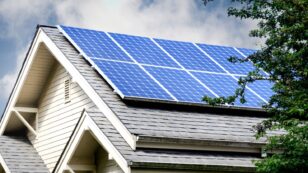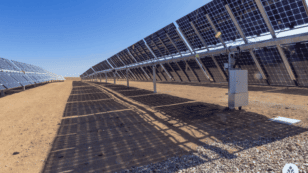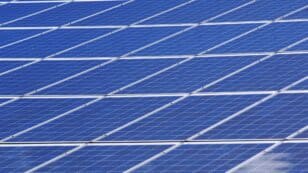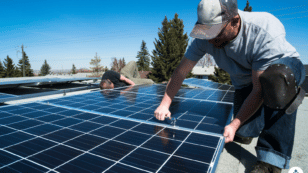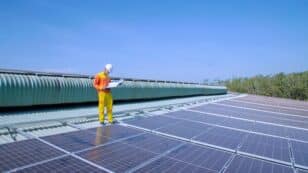
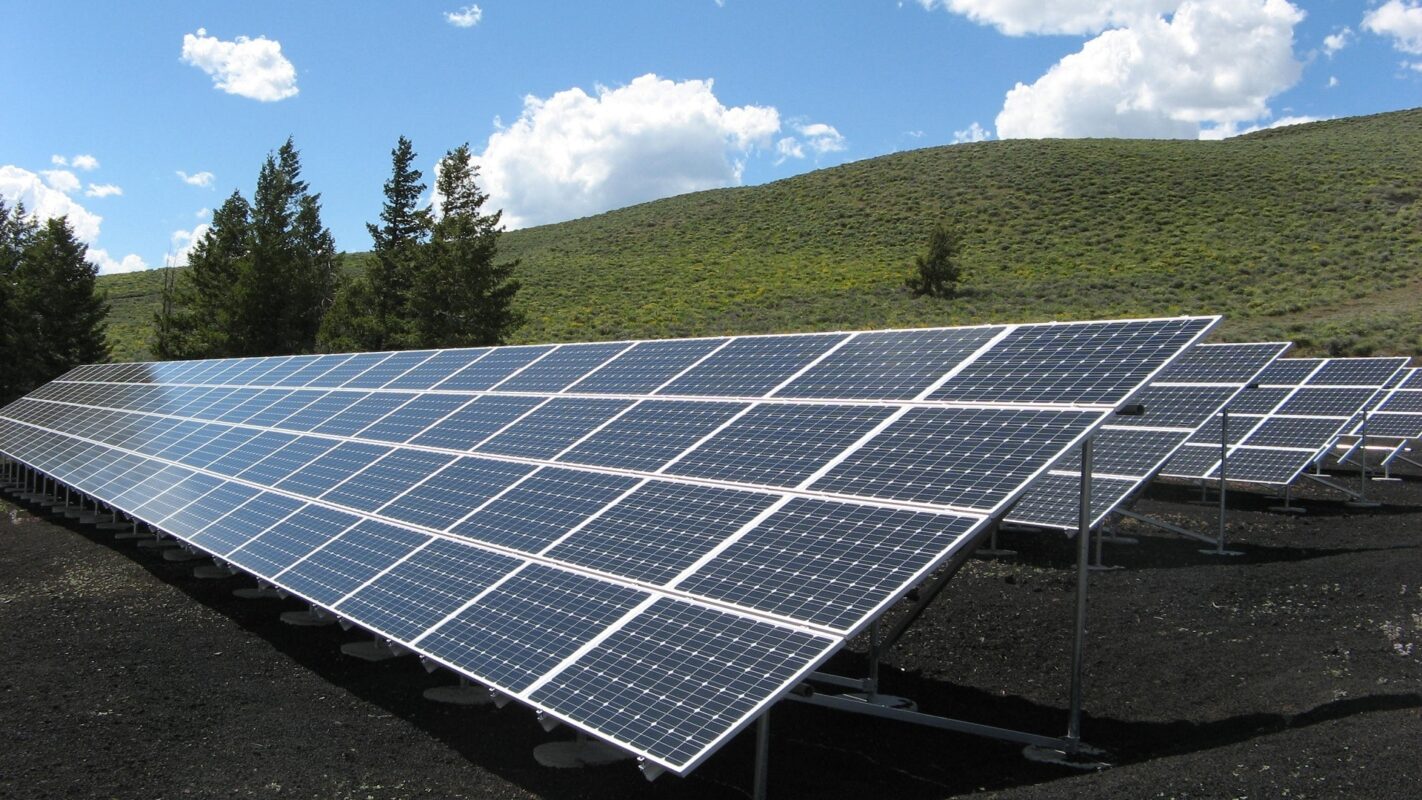
What are Ground-Mounted Solar Panels? (2024 Guide)
Here’s what we’ll cover in this guide:
- How ground-mounted solar panels work
- How to set up a ground-mounted array
- How much a ground-mounted system costs
- How to make the choice between ground- and roof-mounted panels
Each product and or company featured here has been independently selected by the writer. You can learn more about our review methodology here. If you make a purchase using the links included, we may earn commission.
Key Takeaways for Ground Mounted Solar Panels
- Ground mounted Solar panels simply put are solar panels that you install straight into the ground and not on a higher elevated surface.
- Similar to solar panels you might see on solar energy farms, ground mounted solar panels can work and operate closely like solar panels on rooftop systems.
- A great benefit is that they do tend to be more efficient than roof-system solar panels and if your roof isn’t an ideal candidate, you can add these to anywhere on your property.
- A downside, however, is that they do often tend to be more of an expensive option due to labor.
How Ground Mounted Solar Panels Work
Ground-mounted solar photovoltaic systems use the same types of solar panels as rooftop systems, but with a different installation process:
- In a rooftop solar installation, the racking system is designed for an existing structure. On the other hand, when using ground-mounted solar panels, the support must also be constructed. The height of this structure can range from just a few inches above the ground to several feet tall.
- Electrical connections and protection devices are identical in both types of PV systems. The main difference is that ground-mounted systems need more wiring, since they must be located far enough to avoid any shadows cast by your home.
- Just like in rooftop installations, 60-cell solar panels are normally used in homes, while the larger 72-cell panels are used in solar farms.

SunPower
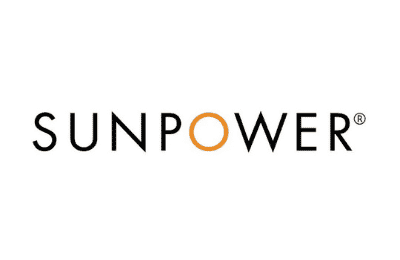
Nationwide Service
Average cost
Pros
- Most efficient panels on the market
- National coverage
- Cradle to Cradle sustainability certification
- Great warranty coverage
Cons
- Expensive
- Customer service varies by local dealer
SunPower designs and installs industry-leading residential solar and storage solutions across all 50 states. With a storied history of innovation dating back to 1985, no other company on this list can match SunPower’s experience and expertise.
SunPower earns its position as the top national installer on our list for a handful of reasons: It installs the most efficient solar technology on the residential market, offers the most expansive service area and backs its installations with a warranty well above the industry standard. All the while, SunPower pioneers sustainability efforts within the industry.
If that weren’t enough, SunPower systems come packaged with products all manufactured in-house by its sister company, Maxeon. This means that your panels, solar cells, inverters, battery and EV chargers are designed to work together and are all covered under the same warranty.
SunPower’s biggest downside? Its high-efficiency panels are considerably more expensive than most of its competitors’ products. However, its powerful panels are workhorses that make up for the initial cost with more backend production (think about this like spending more money for a car that gets more miles per gallon).
Facts and Figures: SunPower
| EcoWatch Rating |
|---|
| Better Business Bureau (BBB) Rating |
| Year Founded |
| Average Cost ($-$$$$$) |
| Solar Services |
| Brands of Solar Equipment Offered |
| Warranty Coverage |
| 5 |
| A+ |
| 1985 |
| $$$$ |
| Solar Panels, Solar Batteries, EV Chargers, System Monitoring |
| SunPower Panels |
| 25-year all-inclusive warranty |

Blue Raven Solar
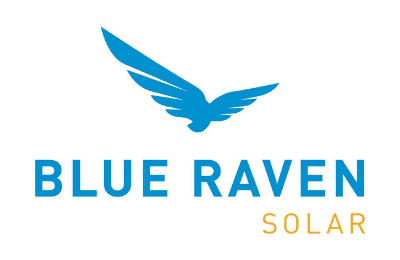
Regional Service
Average cost
Pros
- Industry-leading in-house financing
- Competitive pricing
- Excellent reputation
Cons
- Doesn't offer solar batteries (coming 2022)
We like Blue Raven Solar because it understands that, for most homeowners, the cost of solar presents the biggest barrier to entry.
For that reason, Blue Raven Solar developed an innovative solar financing plan that offers in-house, flexible, zero-money-down options. The results speak for themselves, as Blue Raven Solar is now one of the fastest-growing solar companies in the nation and was recently acquired by SunPower. Its BluePower Plus+ plan (exclusive to Blue Raven) mimics the flexible structure of a lease while still providing the greatest benefits of owning your system.
Eligible homeowners enjoy 18 months of solar power before having to pay their first bill. When coupled with the federal solar investment tax credit (ITC), the initial energy savings can offset more than a third of the overall cost of a system before requiring a dollar down.
In contrast, other installers can only offer similar financing through solar leases, PPAs or third-party providers (such as Mosaic or Sunlight). Third-party loan providers can complicate the process, while opting for a loan or PPA will disqualify you from some of solar’s biggest benefits (additional property value, federal solar tax credit and local solar incentives).
Facts and Figures: Blue Raven Solar
| EcoWatch Rating |
|---|
| Better Business Bureau (BBB) Rating |
| Year Founded |
| Average Cost ($-$$$$$) |
| Solar Services |
| Brands of Solar Equipment Offered |
| Warranty Coverage |
| 4.5 |
| A+ |
| 2014 |
| $$ |
| Solar Panels, System Monitoring |
| Trina Solar, Canadian Solar, SolarEdge, Silfab, SunPower |
| 25-year manufacturer warranty; 10-year workmanship warranty, 2-year production guarantee |
Assuming the same sunlight conditions and total wattage, roof-mount and ground-mount solar panels will have the same electricity output. However, a ground solar panel installation can be designed with an orientation and tilt angle that will maximize the sunlight it captures, which makes the system productive.
On the other hand, the tilt and orientation of a rooftop solar array is limited by your roof slope. A ground-mounted solar panel system can also increase its energy production with a tracking mechanism, which keeps the PV panels angled toward the sun all day long.
This way, you can increase your electricity output and electric bill savings without adding more panels. Solar tracking is not an option for most rooftop installations, since tracking devices are not designed for conventional roof structures.
Setting Up Ground Mounted Solar Panels
There are two main types of structures for residential ground-mounted solar panels:
- A standard ground mount is anchored to the ground in several spots, similar to a canopy or pergola. The top of the structure is a tilted frame, typically made of steel, on which solar panels are installed.
- A pole-mounted system is attached to the ground with a single mast, similar to a small wind turbine or unipole sign. Solar panels are installed on a square or rectangular frame at the top of the mast.
Residential solar panels have a typical size of 65 by 39 inches (17.6 square feet), and the wind can exert a large force when blowing against them. Without an adequate supporting structure, solar panels can be blown away by a strong enough wind.
A strong-enough structure (your roof) already exists when you install rooftop solar panels, but you must build one separately if you’re planning a ground installation. This is normally achieved with a reinforced concrete base or driven piles, while the structure itself is typically made of steel beams. Solar panels are more productive when they face the sun directly.
Of course, the sun’s position in the sky is always changing depending on the time of the day and the season. Sunlight comes from the east during the first hours of the morning, and from the west during the last hours of the afternoon. Also, the sun’s position in the sky is higher during summer and lower during winter. A roof-mounted solar power system has a fixed orientation, which depends on the slope of your roof.
However, ground-mounted solar panels can be equipped with tracking systems, which increase the direct sunlight received by their photovoltaic cells. Solar trackers can be classified as single-axis or dual-axis systems, depending on how they move:
- To track the sun, solar panels can be rotated horizontally from east to west, and they can also be tilted up and down.
- A single-axis solar tracker can only perform one of these movements, while a dual-axis tracker can perform both.
- Among the two types of single-axis systems, east-west trackers achieve a larger production boost than north-west trackers.
- Dual-axis tracking systems have a higher cost than single-axis systems, since they use a more complex mechanism. However, they may be more cost-effective in the long run, as they can achieve a higher efficiency due to their increased accuracy.
Depending on your geographic location, dual-axis solar tracking can increase the electricity output of solar panels by up to 40% compared to a fixed installation. Single-axis tracking normally improves productivity by 25% or more. Solar tracking can be deployed more easily with pole mounts.
Ground-mounted solar panels are a popular choice for DIY solar panel projects, since their installation process is safer. Each solar panel weighs around 40 pounds, and installing many of them on a roof is a dangerous project without the right tools and training (and a supporting crew).
However, the challenge of height is eliminated with a ground-mount solar system.
Is Ground Mounted Solar Cheaper?
Ground-mounted solar panels are safer to install, since there is no need to work on a rooftop, and their maintenance is also simpler. However, the total project cost is higher. Here are a few reasons why:
- You must build a structure to support the PV panels. A rooftop solar installation has a lower cost because the roof itself is the supporting structure.
- The support structure for ground-mounted solar panels also increases the labor requirements for your installation.
- Ground installations also have a more complex permitting process, since they involve foundations and a structural design and are treated as an independent construction.
Keep in mind that while they are more expensive, ground-mounted solar panels are much more productive, and with a solar tracking system can achieve even higher power output.
This means you can recoup your investment faster. If you want to start comparing the cost of a ground-mounted system or rooftop system for your home, you can click below to get a free quote from a top solar compan in your area.
Ground Mounted Panels Vs. Roof Mounted Panels: Which Is Right for You?
When comparing roof-mounted and ground-mounted solar panels, each option has advantages and disadvantages. The ideal option for your property will depend on site conditions and design preferences. A ground-mounted system offers you the following benefits:
- The installation is safer and easier to do yourself, since there is no rooftop work involved.
- Maintenance and repair is also simpler, as the solar panels and other system components can be easily reached.
- A ground installation can be removed and relocated if you need to use that area of your yard for other purposes in the future.
- If you don’t like how solar panels look with your roof design or facade, a ground installation gives you clean, renewable energy without affecting your home’s appearance.
- Ground-mounted solar panels achieve a higher electricity production, since they can be positioned optimally based on local sunshine. This increases your power bill savings.
- When ground-mounted solar panels are used on farms, the ground below them can be used to grow low-light plants or provide shaded grazing areas for livestock.
Like in any investment decision, ground-mounted solar panels also have disadvantages you must consider:
- Ground installations are more expensive because you must build a supporting structure. A rooftop installation skips this step.
- Ground-mounted solar panels are not allowed by many homeowner associations.
- Even when ground-mounted solar systems are allowed, they tend to have a more complex permitting process than rooftop installations.
- A ground installation takes up space that could be used for other constructions or yard features.
- Since they are accessible, ground-mounted solar panels are more exposed to tampering, damage from animals and other nuisances.
- A ground installation can be blocked from the sun by new constructions or growing trees, while a rooftop system is less likely to be shaded over time.
If you’re considering ground-mounted solar panels, you must first determine if your property has the right conditions. In general, you will need an area that is not covered by shadows, and you should check if any neighboring constructions could block sunlight in the future.
Keep in mind that each solar panel covers around 18 square feet, so if you plan to install 20 of them, you need around 360 square feet of unshaded space. Although rooftop installations are more common, ground-mounted solar panels are often a better investment for some homeowners.
They are ideal for large properties, especially if they have ample areas without obstacles casting shadows. A ground installation achieves a higher electricity production without increasing the number of solar panels you need to purchase, especially if you add a tracking system.
FAQ: Ground-Mounted Solar Panels
The exact requirements for a construction permit will vary depending on where you live. However, ground-mounted solar panels tend to have a more complex permitting procedure, as they require you to build a supporting structure. Installation will involve processes like excavation and concrete pouring, which are not required for a rooftop installation and may require extra permissions.
It is better to install solar panels on the ground only when you have proper site conditions — including adequate ground space and approval from your neighborhood — as ground installation makes solar panels more productive. When on the ground, solar panels can be installed with the ideal tilt and orientation for maximum sunlight, and you can add a solar tracker to make them even more productive. In a rooftop system, the panels are permanently fixed with the same orientation, which is not always the best direction for solar panels.
Ideally, ground-mounted solar panels should be installed at enough distance to avoid shadows produced by your house. If you install them too close to your house, their electricity output will be reduced by shading.
The ideal location for ground-mounted solar panels is one that doesn’t get any shading, from sunrise to sunset. As long as shadows are avoided, almost any spot on your property can be used for ground-mounted solar panels. However, installing them especially far from your house will increase the wiring distance, making the electrical installation more expensive.
If your home isn’t well suited for rooftop solar panels, alternatives to power your whole home include ground-mounted solar panels, a solar carport or a solar canopy or pergola. You can also opt for a solar power system for specific home appliances, such as a solar pool heater, yard irrigation system or solar hot water heater. Keep in mind that many solar power options could be suitable for your home, which means you aren’t forced to pick only one.
Comparing authorized solar partners
-
- Most efficient panels on the market
- National coverage
- Cradle to Cradle sustainability certification
- Great warranty coverage
- Expensive
- Customer service varies by local dealer
A+Best National Provider1985SunPower Panels25-year all-inclusive warranty
Having trouble deciding? Click below and use our process to receive multiple quotes instead:

 233k
233k  41k
41k  Subscribe
Subscribe 


